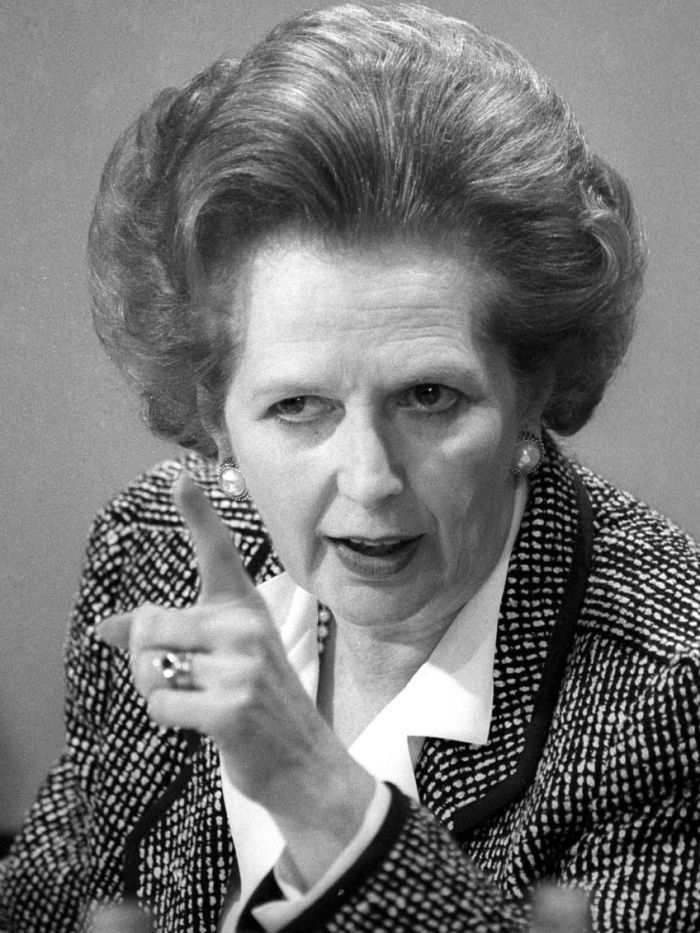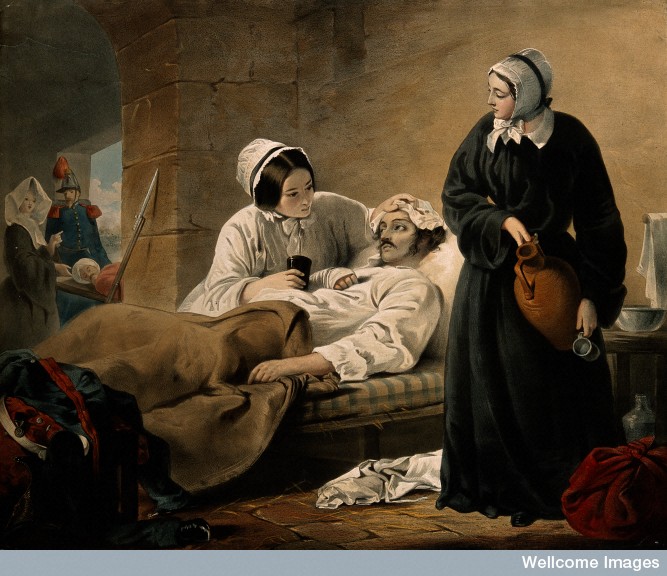
Apparently Margaret Thatcher was my hero. When I was in Year 6, each kid in our class had to nominate a female role model and I chose the Iron Lady. I don’t know why I didn’t pick Aung San Suu Kyi. Way cooler. And I mean, I’m possibly part-Burmese. Maybe.
Meanwhile, Alex – the boy I had a crush on – chose English nurse Florence Nightingale. My heart fluttered and sighed. This guy is beautiful and deep!
He chose a compassionate, determined, God-fearing woman. I chose a conservative prime minister (in)famous for being a hard-ass.
To this day, I think Alex had the right idea. And I’m starting to think I need to have better taste in women.
The Mary model
In my present work circles, Mary MacKillop is everyone’s hero. The woman to be loved. To be revered. To be … prayed to? Every evangelically-programmed cell in me tenses and bristles.

Mary MacKillop was a woman of deep faith, conviction and courage. She was a model of perseverance and forgiveness in the face of much opposition both within the church and in broader society. In nineteenth century colonial Australia, she was actually revolutionary in her leadership of her religious order and in her belief in education for rich and poor alike.
I know that she did a lot of wonderful work. I know that a lot of what she did proved to be more important than even she imagined. I know that she effected lasting change.
But I’m just not feeling it.
As I tried to explain to my manager, it seems to me that she was only doing what anyone who says they believe in and follow Jesus should do.
To which my manager said that’s exactly it: Mary did what we all should be doing but don’t do, and that’s why she’s a role model for us all.
I tend to think that if there is (or was) someone out there doing what you should be doing but don’t do, you should get your act together rather than putting this person up on a pedestal. Rather than praying to them.
Learning curves
“This will be a big learning curve for you,” my manager observed.
My first response (thought but not vocalised) was one of defiance: I shall never learn to worship Mary!
But I am learning some unexpected things.
I am learning that Catholics might have a better idea about missions than evangelicals. It’s been apparent to me for a long time that they do a lot more social justice than other denominations, but now I am starting to see that this has less to do with a works-based faith and more to do with having a broader and richer understanding of what mission is. Mission is more than a flowchart of telling people about Jesus and making disciples: it’s showing Him to people, showing His love and showing He loves them by treating them with compassion, upholding their dignity, seeking justice for them.
I am learning, in reflecting on the aforementioned conversation, that perhaps I still have a woefully inadequate perception of what makes a strong and effective female leader. Instead of thinking along the lines of Margaret Thatcher and even Aung San Suu Kyi, I should be looking at what I can learn from women like Florence Nightingale and Mary MacKillop.
The first two are women in the “man’s game” of politics; the latter two were leaders despite the men, who often served men but refused to be dominated by them.
What I am starting to see now with women like Florence and Mary (yeah, we’re on first name terms) is that they’re examples of servant leadership and inner strength. And they happen to be women.
I like that.

*
At the end of the day, I’m still not really the kind of person to have heroes or role models. It’s not like I had posters of Margaret Thatcher adorning my bedroom walls; if I’d actually had any idea about the nature of her policies I doubt I’d have nominated her. I named her because she was a prominent woman and, well, perhaps I’ve simply always had a political bent.
So why does Mary not leave a deep impression on me when there are so many reasons to admire her, all of which speak to my own values? I don’t have an answer to that but reflecting on this Mary business is pushing me to ask myself a number of questions. Like which traits I admire in others and which traits I overlook – and why this might be the case.
That’s gotta be a good thing.



